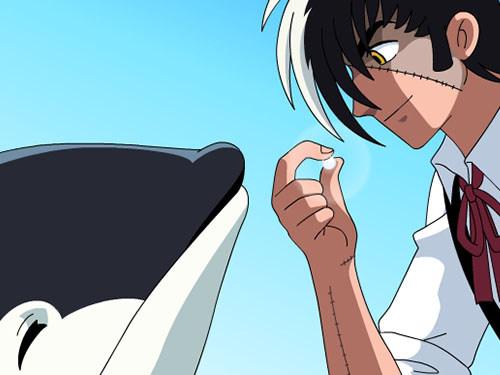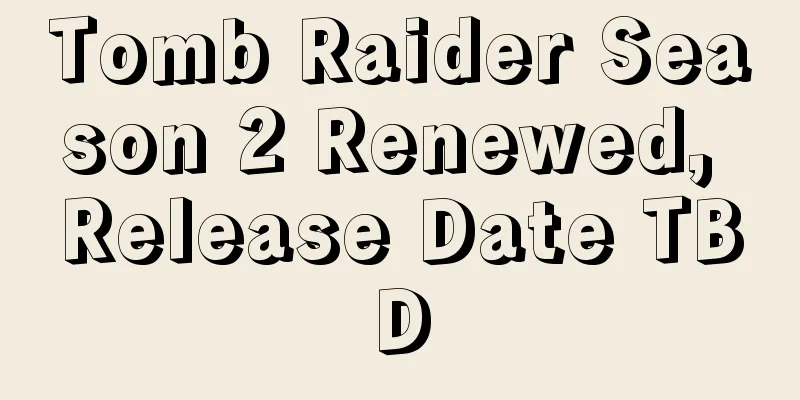"Star Rails" review: An emotional journey and character development

"The Rails of the Stars": A moving story depicting the tragedy of war■Overview of the work"Star Rails" is an animated film released on July 10, 1993. It is based on a picture book written by actress Kobayashi Chitose based on her own experiences, and is a moving story depicting the tragedy of war. It was directed by Hirata Toshio, animated by Madhouse, and distributed by the National Film Center Cooperative. Its Eirin number is 113978, and it is a 76-minute, one-episode film. ■ StoryIn 1940, five-year-old Chiko lived in Sinuiju, a town at the mouth of the Yalu River near Manchuria in the north of Korea. She lived happily with her father Kazuhiko, mother Mashiko, sister Miko, and maid Hana. However, the shadow of war gradually crept in, and her peaceful life began to crumble as the red school bags she longed for were banned and her father was drafted into the army. The family moved to Pyongyang where her grandparents lived, but misfortune continued to occur, with Miko dying of typhoid fever and Hana being fired for carelessly injuring Chiko. After the war ended, with the Soviet army occupying the country, Chiko's family hid in a freight train with other Japanese people and tried to escape to Japan. After overcoming many hardships, Chiko and her family were able to safely cross the border. ■Explanation"Starry Rails" is an animated film about a Japanese girl and her family in former Manchuria who are caught up in the Pacific War. While it sings of the tragedy of war, it also portrays family ties and hope. The film is based on a picture book written by actress Kobayashi Chitose based on her own experiences, and has been praised for its realistic depictions. Director Hirata Toshio carefully portrays the misery of war and the love of a family, deeply moving the audience. Madhouse, which produced the animation, supports the story with beautiful visuals and meticulous drawings. ■CastThe voice cast includes Takamori Yoshino as Chiko, Tanaka Hideyuki as Kazuhiko, Han Keiko as Mashiko, Ogata Kenichi as Take, Sakamoto Chinatsu as Miko, Suzuki Reiko as Shigeko, and Tsuji Shinpachi as Sano. Takamori Yoshino in particular captured the hearts of the audience with her realistic portrayal of a young but strong-willed girl. Tanaka Hideyuki as Kazuhiko deeply expressed the pain of a father who protects his family, and Han Keiko as Mashiko portrayed the kindness and strength of a mother. ■ Main staffThe film was directed by Hirata Toshio, directed by Namekawa Satoru, and written by Urahata Tatsuhiko and Asakura Hideo. It was based on the original story by Kobayashi Chitose, executive produced by Takeuchi Mamoru, planned by Shikamoto Kisuke, and produced by Otsuka Satoshi and Hori Yuzo. Character design was by Kanemori Yoshinori, animation director Kimizuka Katsunori, cinematography by Yamaguchi Jin, art direction by Ikeda Yuji, music by Sakata Koichi, vocals by Masuda Hiromi, sound by Ando Kunio, and editing by Ogata Harutoshi. Sakata Koichi's music in particular played an important role in bringing out the emotion of the story. Masuda Hiromi's singing voice also resonated deeply with the audience. ■ Theme songs and musicThe theme song, "Yozora de Hoshi wa Umaeru Youni" (Like a Star is Born in the Night Sky), was written by Tokiko Iwatani, composed by Koichi Sakata, arranged by Yasuo Higuchi, and sung by Hiromi Masuda. This song beautifully expresses the feelings of Chico, who has overcome the tragedy of war and is filled with hope. Koichi Sakata's composition played an important role in bringing out the emotion of the story, and Hiromi Masuda's singing voice resonated deeply with the audience. ■ Evaluation and impressions"The Rails of the Stars" is a moving work that depicts the tragedy of war, but also the bonds and hopes of family. The realistic depiction of the original work and the careful direction of director Toshio Hirata were highly praised by the audience. In addition, the beautiful visuals and detailed drawings by Madhouse, the animation production company, are also important elements that support the story. In particular, the performance of Takamori Yoshino, who plays Chiko, captured the hearts of the audience with her realistic portrayal of a young but strong-willed girl. In addition, the performances of Tanaka Hideyuki, who plays Kazuhiko, and Han Keiko, who plays Mashiko, also deeply portray the bonds of family. The theme song, "Like a Star is Born in the Night Sky," beautifully expresses the feelings of Chiko, who has overcome the tragedy of war and has hope, and resonated deeply with the audience. ■ Recommendation points"The Rails of the Stars" is a moving work that depicts the tragedy of war, but also depicts family ties and hope. The realistic depiction of the original work and the careful direction of director Toshio Hirata were highly praised by the audience. In addition, the beautiful visuals and detailed drawings by Madhouse, the animation production company, are also important elements that support the story. In particular, the performance of Yoshino Takamori, who plays Chiko, captured the hearts of the audience with her realistic portrayal of a young but strong-willed girl. In addition, the performances of Hideyuki Tanaka, who plays Kazuhiko, and Keiko Han, who plays Mashiko, also deeply depict the family ties. The theme song "Like a Star is Born in the Night Sky," beautifully expresses the feelings of Chiko, who has overcome the tragedy of war and has hope, and resonated deeply in the hearts of the audience. This is a valuable work that allows you to feel the importance of knowing the tragedy of war and the strength of family ties. I would like you to see it at least once. Related information"The Rails of the Stars" was released on July 10, 1993 and distributed by the National Film Center Cooperative. Its Eirin number is 113978 and it is a 76-minute, one-episode film. It is based on a picture book written by actress Kobayashi Chitose based on her own experiences, and is a moving story depicting the tragedy of war. It was directed by Hirata Toshio and animated by Madhouse. The cast includes Takamori Yoshino as Chiko, Tanaka Hideyuki as Kazuhiko, Han Keiko as Mashiko, Ogata Kenichi as Take, Sakamoto Chinatsu as Miko, Suzuki Reiko as Shigeko, and Tsuji Shinpachi as Sano. The main staff includes director Toshio Hirata, director Satoru Namekawa, screenwriters Tatsuhiko Urahata and Hideo Asakura, original author Chitose Kobayashi, executive producer Mamoru Takeuchi, planner Kisuke Shikamoto, producers Satoshi Otsuka and Yuzo Hori, character designer Yoshinori Kanemori, animation director Katsunori Kimizuka, cinematographer Jin Yamaguchi, art director Yuji Ikeda, music composer Koichi Sakata, singer Hiromi Masuda, sound engineer Kunio Ando, and editor Harutoshi Ogata. The theme song "Like a Star is Born in the Night Sky" was written by Tokiko Iwatani, composed by Koichi Sakata, arranged by Yasuo Higuchi, and sung by Hiromi Masuda. This is a moving work that depicts the tragedy of war, but also the bonds and hopes of family. I highly recommend you to see it. |
<<: A thorough review of the love and humor in Dr. Slump Arale-chan Ncha! Penguin Village
>>: Red Wolf review: A fusion of striking visuals and profound storytelling
Recommend
The martial arts film "No One 2" is scheduled to be released on iQiyi Cloud Cinema on the first day of the Lunar New Year
The martial arts action film "No One 2"...
Hayao Miyazaki's new work is only 15% completed in 3 years, and only one minute of screen can be completed every month
According to foreign media Animenewsnetwork recen...
The latest cast of "New Interpretation of the Three Kingdoms" directed by Yuichi Fukuda is announced, and the core members of the Eastern Wu appear
The official version of "New Interpretation ...
Tencent Video announces the introduction of "Dragon Family" and is scheduled to be released on May 22
Tencent Video announced today that it will introd...
"Nezha 2" enters the global box office list and ranks 11th, surpassing the Avengers
The total box office of the movie "Nezha: Th...
Netflix's new drama "DP: The Deserter" was protested by 7-11 and it wanted to take legal action, saying the plot was vilifying
The new Korean drama "DP: Deserter" whi...
Esports clubs Team PWR and The Chiefs hold a viewing event for "Lunar Rebels: Daughters of Fire" with Netflix
The science fiction film "Moon Rebels Part 1...
Netflix's Cowboy Bebop cast announced, John Cho to play Spike
As early as the end of November last year, Netfli...
"Sword Art Online" new movie and visual image announced, to be released in autumn 2022
Today (March 23, 2022), the official Sword Art On...
A thorough review of the heated final chapter of Super Beast Machine God Dancouga!
Super Beast Machine God Dancouga: The Incandescen...
Nogizaka46's new musical "Sailor Moon" will be held in Shanghai in November
Naoko Takeuchi's classic work "Sailor Mo...
The appeal and reviews of "The Mystical Law": A thorough analysis of the profound story and the appeal of the characters
"The Mystical Law": A profound journey ...
Strike Gundam is coming! New Gunpla model series brand "Gundam Universe" launches new products
As a new plan to commemorate the 40th anniversary...
The adapted animation "Brothers and Sisters of Ziyun Temple" announced a special news trailer and will be broadcast in 2025
The manga "Brothers and Sisters of the Shiun...
The movie "Despicable Me 4" will be introduced to the mainland, and the release date is yet to be determined
On April 29, Universal Pictures announced that th...









